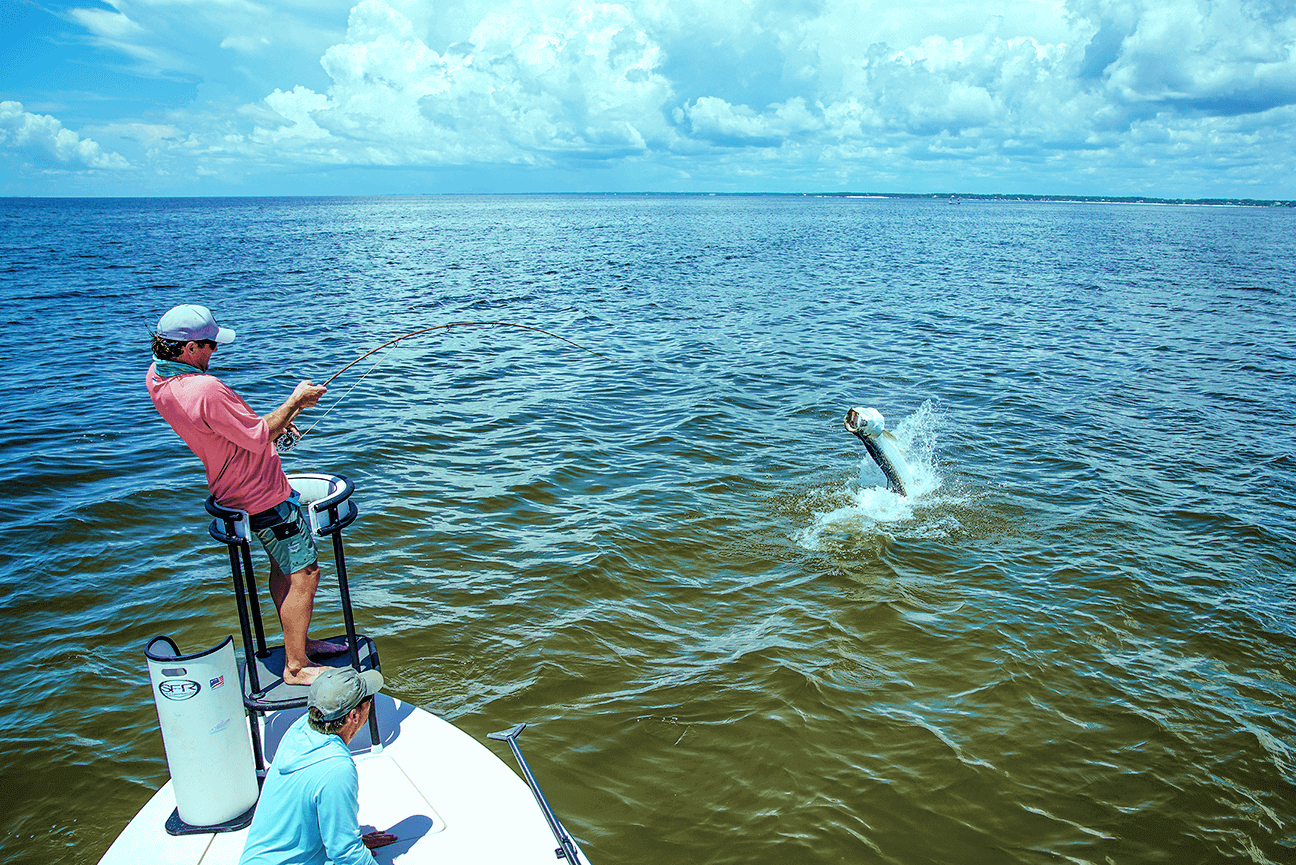Fly Rod Manufacturer Thomas & Thomas is turning 50
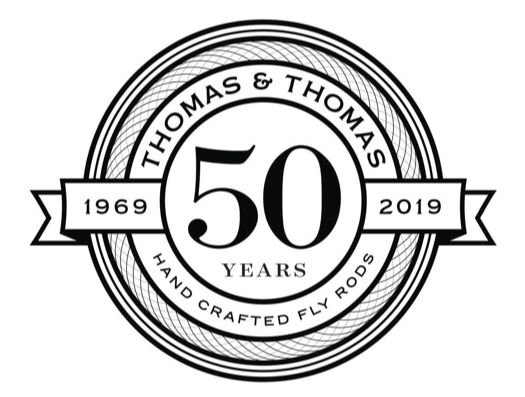 Here’s an article from our visit to the Thomas & Thomas factory in Massachusetts (followed by the T&T press release)
Here’s an article from our visit to the Thomas & Thomas factory in Massachusetts (followed by the T&T press release)
Originally appeared in Tail #36 – July/August 2018
If you don’t know what you’re looking for, you might not notice the Thomas & Thomas factory. Set where it is, on a backroad in rural western Massachusetts near the convergence of three major rivers, you might mistake it for a remnant of the paper industry.
“I tried to buy the business without buying the building,” explains Neville Orsmond, T&T’s CEO since 2014, on the rainy January day we visit, “—but that wasn’t possible. As it’s laid out, the factory is simply inefficient for producing fly rods.”
Neville Orsmond knows something about efficiency. Before taking over Thomas & Thomas, he worked for a company that installed automated parking systems in New York City. A fly angler since childhood in his native South Africa, and a fan of Thomas & Thomas fly rods for nearly as long, Neville’s position with the parking-system company gave him access to the region’s storied trout waters, as well as airline access to exotic saltwater destinations. It also put him a couple of hours by car from the town of Greenfield and T&T’s offices. When he got word that the business might be up for sale, he made the drive—the first leg in the journey that would change his life.
“Let’s save the bamboo room for last,”
advises John Carpenter, T&T’s
Operations Manager, who serves as our
tour guide. “If we begin there, we find
that everyone usually gets stuck.”
Thomas & Thomas was founded in 1969 by brothers in law Thomas Dorsey and Thomas Maxwell. The business originally began in Pennsylvania, in a rented cabin on the banks of a limestone stream. But when they bought at auction the extensive machinery from Massachusetts rod maker Sewell N. Dunton & Sons, whose company origins dated from the 1850s and whose inventory included the original milling machines acquired from the Montague Rod Company, they found they didn’t have the finances to transport the equipment to Pennsylvania. So instead, they relocated to Turners Falls, Massachusetts, on the Connecticut River. In 2001 the company moved across the river to Greenfield, where it has called home ever since.
While their sole focus in the beginning was high-quality split-cane rods (for which all would-be clients had to join a waiting list), by the mid-1970s they had become pioneers in the use of carbon fiber.
Its reputation bolstered by such high-profile customers as Ernest Schwiebert and Ted Williams, the company grew quickly. By the early 1990s, Thomas & Thomas had 30-plus full-time employees who turned out more than 10,000 rods per year for the world market, including graphite rocket launchers for the burgeoning saltwater game.
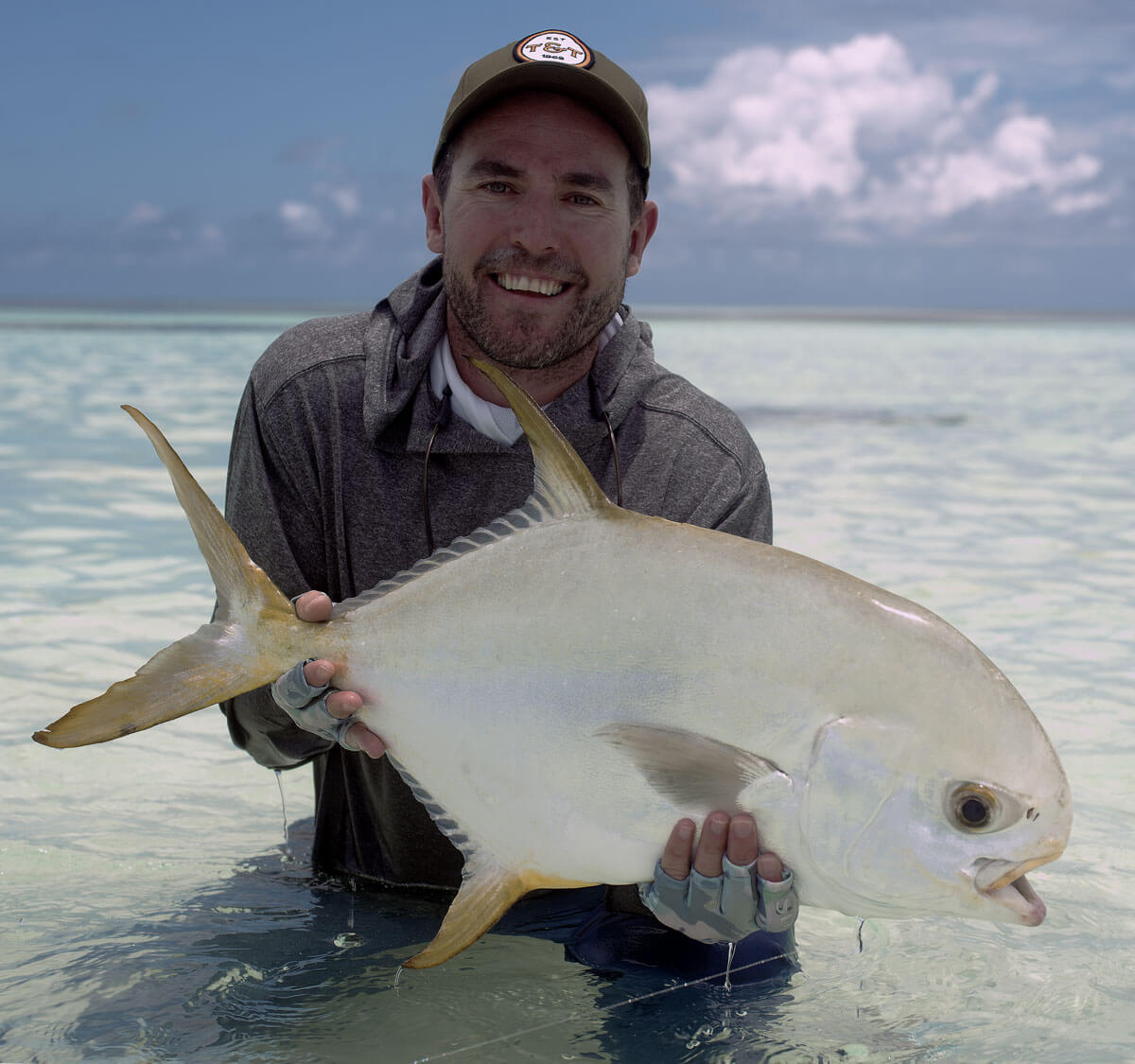 The Thomas & Thomas that Neville Orsmond found when he arrived in Greenfield in 2013 had declined considerably since its glory days. The iconic brand had suffered through a number of ownerships and poor business decisions, the credit crisis of 2008, and bad management. Then-owner Mark Richens had narrowly rescued the company from receivership.
The Thomas & Thomas that Neville Orsmond found when he arrived in Greenfield in 2013 had declined considerably since its glory days. The iconic brand had suffered through a number of ownerships and poor business decisions, the credit crisis of 2008, and bad management. Then-owner Mark Richens had narrowly rescued the company from receivership.
Neville wasn’t deterred. The kid who loved fly fishing was now a business-savvy adult who had the resources to turn things around. He also had the encouragement of his wife. Eight months later, he had the keys to the place.
So began Neville Orsmond’s apprenticeship in fly rod production. Each Sunday evening he made the drive from his home in Connecticut and checked into a local hotel, hitting the factory floor by seven each morning during the workweek to learn from the ground up each phase of production—as well as service, sales, and marketing. (He lived out of that hotel room for a year before moving his family to Massachusetts.)
“The first thing I had to do was to address repairs,” Neville says: “They were backlogged six months. To claim you make the world’s finest fly rod is no small thing. You can’t have a customer waiting six months to get his rod fixed.”
This focus on the customer extends to all aspects of the business. There is no automated phone system. Everyone answers the phone, including Neville. “I don’t want to hear it ring four times,” he says. In addition, all customer emails get answered promptly.
Neville’s next order of business, he says, was to modernize production, which required a sizable investment in new equipment. Replacing the outdated rolling table, convection oven, and cellophane-wrapping machine with computer-controlled versions afforded much more precision when working with the latest graphite composites.
“Let’s save the bamboo room for last,” advises John Carpenter, T&T’s Operations Manager, who serves as our tour guide. “If we begin there, we find that everyone usually gets stuck.”
We begin at a row of industrial-size chest freezers. The primary material of T&T’s rod blanks, graphite composite sheets (carbon fibers impregnated with thermosetting resin) arrive at the factory packed in dry ice. Because their shelf life is based on temperature, the sheets are kept frozen until ready to use. This extends shelf life for up to a year.
Despite Neville’s talk of modernizing production, it quickly becomes clear that building graphite fly rods is still very much an artisan endeavor. We look on as pattern-cutter Mike Jenest uses templates and a razor knife to hand-cut blank sections from the composite sheets.
The cut sections of graphite composite (known in the industry as flags for their pennant shape) are then fastened to precisely tapered steel mandrels using a tacking agent and are placed on a rolling table, which vaguely resembles two ironing boards placed one atop another. The top board rolls the graphite composite around the mandrel using a steady, even pressure, ensuring there are no wrinkles. A tape-wrapping machine spiral-wraps a strip of heat-resistant cellophane tape the entire length of the blank section.
The tape-wrapped blank sections are now ready for curing. To achieve consistency in the finished product, a computer-controlled convection oven heats the blank sections in a series of steps—that is, various temperatures for precise lengths of time. One key step is known as the gel phase, in which the resin melts and the cellophane tape shrinks, squeezing the liquified resin amongst the graphite fibers, bonding everything together. Many of the advancements in resin technology, John Carpenter points out, involve getting the graphite fibers to bond together better. Working in conjunction with its suppliers, Thomas & Thomas has recently helped develop a nano-particle resin that fills microscopic voids in the graphite, adding strength to the blank while reducing its weight. This can be experienced in their newest saltwater series, the Exocett, a powerful rod that’s very light in hand.
After the blank sections have finished baking, the cellophane tape is stripped off and the sections are removed from the mandrels. Depending on the model of rod being built, the sections are sanded to remove the spiral ridges left by the cellophane. The sections are then painted, most with T&T’s trademark blue finish—either glossy or matte. Once the coatings have dried, the final step in blank production is to cut and hand-fit each male and female section—that is, the sleeve ferrules—to complete the individual blank.
Each blank is splined—that is, the backbone of the rod is located and marked—and guide placement is marked in line with the spline and spaced according to a predetermined formula. Now the blank is ready to have the guides wrapped on. We watch Sheila LaShier, an employee of 25 years, wrap a rod old-school—that is, no wrapping stand. The company presently contracts with a number home wrappers, members of the community who are trained at the factory and take bundles of rods home to wrap piecework.
Each section of every rod is inscribed with the rod’s unique serial number. This facilitates any future repairs, and it prevents the owner from mixing up sections from two different rods—even on identical models. As John Carpenter explains, blank sections of identical rods are not interchangeable: Each piece is hand-fitted to its adjoining section. This makes each T&T fly rod a unique instrument.
Thread wraps are coated in a special environment-controlled room devoid of dust particles. Three coats of epoxy are applied over as many days. Coating the wraps in stages prevents excessive weight along the blank and contributes to the rod’s elegance.
The butt section of the Exocett is fitted with a light gray anodized aluminum reel seat containing two large locking rings. This is complemented by a full wells grip (comfortable in hand and not overly large) and fighting butt turned from premium cork.
The company’s roster of advisors and pro staff use and abuse both production rods as well as prototypes in every fishery imaginable—trout to trevally, bluegill to blue marlin—and provide feedback that informs production and design.
Painstaking though the process is—and you’re getting the abridged version—this is what’s required to produce superior graphite fly rods for the demanding modern market.
If the graphite end of the factory appeals to the engineer-minded practitioners of the game, the bamboo room appeals to the poets. At once you’re enveloped in a completely different energy, as if transported through time. It is here, amid handsaws and block planes, the smell of burlap and wood varnish, that Troy Jacques transforms raw bamboo culms into the exquisite fly rods that established the Thomas & Thomas name.
Troy learned his craft first under the guidance of company cofounder Tom Dorsey, and later under the mentorship of the late British rod-making legend Tom Moran, who, according to Dorsey, “stood above and beyond any I have met.” When Moran returned to England in 1995, all bamboo rod production passed to Troy.
“I remember the month before Tom left,” recalls Troy. “I followed him around with a notebook, writing down everything he said. I knew I had to be 110 percent in this. If I was only 90 percent, Tom Dorsey never would have kept me on.”
Troy fills us in on the background. Of the thousand-plus species of bamboo, which actually belong to the family of grasses, Tonkin cane (Arundinaria amabilis McClure) possesses the greatest structural strength, with a tensile strength greater than steel. Tonkin cane grows only in a relatively small area of South China’s Guangdong Province (an area about the size of the county in which Greenfield resides). Contrary to what you might think, the finest Tonkin cane is not particularly rare or expensive; enough of the raw material to produce a rod might cost as little as $15. Your investment in a bamboo rod is in the building.
Troy shows us a bamboo culm in cross-section, pointing out the power fibers, which lie at the outer edge of the ring, and the inner white pith, which offers nothing to the rod in terms of flex. The lengths of bamboo that have the greatest percentage of power fibers to pith are those that are closest to the ground.
The culms are split and planed into equilateral triangular sections, tapered along their length to tolerances within a thousandth of an inch (finer than the finest human hair, to give you a point of reference) and glued and wrapped together to form a hexagonal shaft. “A bamboo trout rod,” says Troy, “can have a bit of pith. But a 10-weight rod should consist entirely of power fibers.”
This segues into the most intriguing leg of the tour for us—T&T’s latest models of bamboo: their saltwater series of rods.
This is a project Troy has wanted to undertake since the beginning. Inspired by vintage images from the early days of the game—“I’d like to fill that entire wall with black-and-white photos”—he began to design and build his first saltwater rod, an 8-foot, 3-inch rod for 9-weight line.
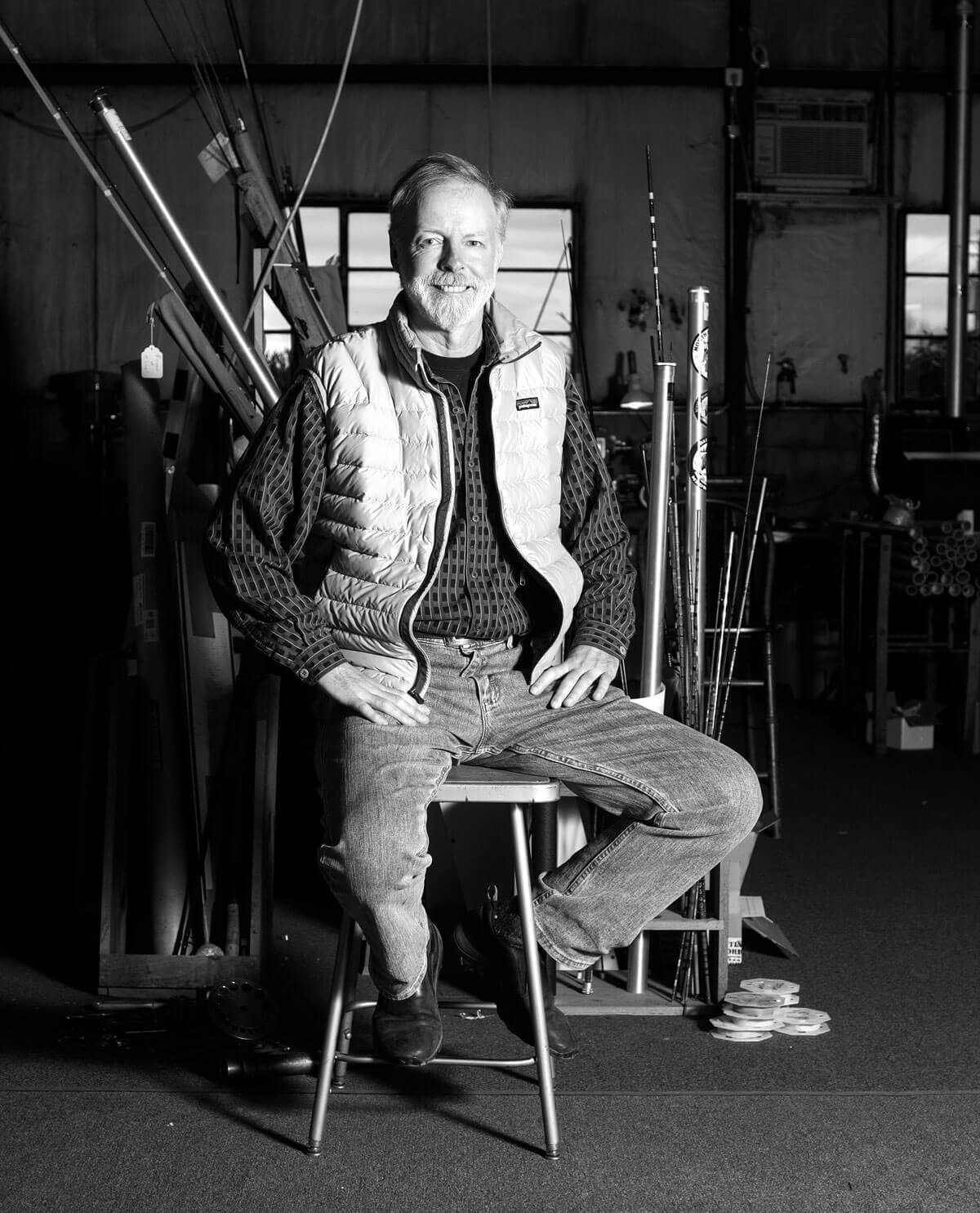 John Carpenter recalls when he and Troy took the prototype to Martha’s Vineyard to sight fish for striped bass, guided by Captain Jaime Boyle. “We took along a 9-weight graphite rod as well, and we thought the bamboo would be a novelty. We thought we’d each catch a fish with it and put it away. But it was so much fun that we didn’t pick up the graphite rod the entire day.”
John Carpenter recalls when he and Troy took the prototype to Martha’s Vineyard to sight fish for striped bass, guided by Captain Jaime Boyle. “We took along a 9-weight graphite rod as well, and we thought the bamboo would be a novelty. We thought we’d each catch a fish with it and put it away. But it was so much fun that we didn’t pick up the graphite rod the entire day.”
As striped bass are difficult to come by in western Massachusetts in January, we had to content ourselves with taking the rod out on the lawn for a test drive. For those who question whether the noble grass is up to the job of making the long, powerful casts required for success in salt water, be advised: This ain’t your grandaddy’s bamboo.
“Although I love graphite for the phenomenal casting tool it is,” Troy says, “there are things I actually like better about bamboo. It has more feel, and it can water-load a longer line than graphite can.”
These rods aren’t just pretty casting tools, however. To date, the largest rod Troy has built, a 12-weight, has subdued giant trevally, tuna in the 100-pound range, a tarpon of 160 pounds, as well as large sailfish and marlin.
“The advisors have been pushing the prototype 12-weights beyond what I had intended. I actually appreciate this, because if I can get a rod back and look at it and see where the extreme has caused it to fail, then I can take that as constructive criticism to build a 14- or 16-weight.”
Troy doesn’t know how many of these rods Thomas & Thomas will sell (at this writing, there’s about a nine month wait for custom bamboo). “They’re not for everybody,” he concedes. “They’re for the angler who’s on the water a lot, has done a lot of sight fishing, and they’re looking for that next challenge. Kind of like the hunter who starts hunting with a longbow. That’s what got me into fly fishing to begin with—the challenge. That’s what keeps me interested. That’s what keeps me a kid.”
We conclude our tour in Neville’s office, with a cup of coffee he prepares for us. Neville asks us about our fishing and talks enthusiastically of his own. It’s clear that this is exactly where he wants to be in life, doing the job that he was born to do.
Neville talks about his plans for the future of the company—a new factory that doubles as a visitors’ center to promote the region’s natural resources. “The Commonwealth has been fantastic to work with,” Neville says. “They’ve been very supportive of what we’re doing for the economy here, and they’ve given us a lot of encouragement to move forward.” Neville’s affable smile conveys a can-do attitude that leaves no doubt he’ll make it happen.
You don’t need to wait for the visitor’s center to open, however. Neville encourages anyone to stop by for a visit now. If you do, you’ll find an upscale fly rod factory to be sure, but you’ll find much more than that.
PRESS RELEASE FROM THOMAS & THOMAS:
THOMAS & THOMAS CELEBRATES 50 YEARS OF INNOVATIVE CRAFTSMANSHIP
May 30, 2019
When graduate student Tom Dorsey set out to build his own bamboo fly rod in the late 60s, little did he know his experimentation would lead to the founding of a rod making company that would endure the coming decades. In 2019, Thomas & Thomas Fly Rods (T&T) celebrates its 50th year of crafting fly rods in the United States, and with that, reflects on what it’s taken to make, “The rod you will eventually own.”
Consumed by a passion for fly fishing, but unable to afford the equipment, Dorsey and his brother-inlaw Tom Maxwell (the two married sisters) set out to build their own bamboo rods. Trained by a relative, the two soon became full-time rod builders. Thomas & Thomas was founded in Chambersburg, PA in 1969. While the American fly-angling scene became saturated with and fixated on the advances of mass-produced fiberglass rods, the Toms stayed the course of American craftsmanship in their small cabin workshop which sat on the banks of a limestone stream. They rejected the cookie-cutter techniques becoming all the rage and adhered to American traditions of high craftsmanship and heirloom quality. That quality garnered the attention of angling legends Vince Marinaro, Ernest Schwiebert and others who proclaimed T&T rods unrivaled in performance and craftsmanship.
Not long after founding T&T, the Toms were presented with the opportunity to purchase rod making equipment and the largest cache of Tonkin bamboo in North America in Turner Falls, MA. The company relocated there in 1974 and continued operations.
Around this time, graphite entered the market. While the Toms rejected fiberglass through the 60s, they felt their values could transfer to graphite (Though, T&T would make fiberglass rods as a retro nod some decades later.). In 1977 they created their first T&T graphite rods, stamped with distinct touches, such as stunning rosewood inserts. As always, they maintained a mantra of “form follows function,” using the same rules applied to bamboo rod making.
Whether crafting graphite, fiberglass or bamboo rods, Dorsey emphasized that the T&T process does not adhere to strict formulas produced by engineering software, but rather, good old fashioned casting and hand-craftsmanship, “a tedious, but rewarding task, which I view as an empirical process, more akin to the culinary arts than science. Try and then tweak, change, try again and change some more. This not only requires good casting skills and technique, but diagnostic insight and an ability to evaluate results—what to change, where to change, to what degree and what those changes should accomplish.”
John Carpenter, a custom woodworker who joined T&T in the late 90s, noted, “The two Toms tried to preserve the idea of a finely crafted handmade bamboo rods no matter what material they were using. They continued to reject the standards of modern mass-produced, machine-made items in favor of thoughtfully handmade items that would last through generations. That spoke to me because it fit into my idea as a woodworker of how we should make finely designed and crafted things that are designed to last and be appreciated.”
Each and every rod was tested and the smallest adjustments made by hand to correct any imperfections, standards still in practice by T&T rod makers today. Because Dorsey was an early adopter of two-handed casting, T&T built some of the first graphite spey rods on the American market. It wasn’t until the 90s that the company’s graphite rods were painted T&T blue to make the product stand out in stores. The color has remained a staple since.
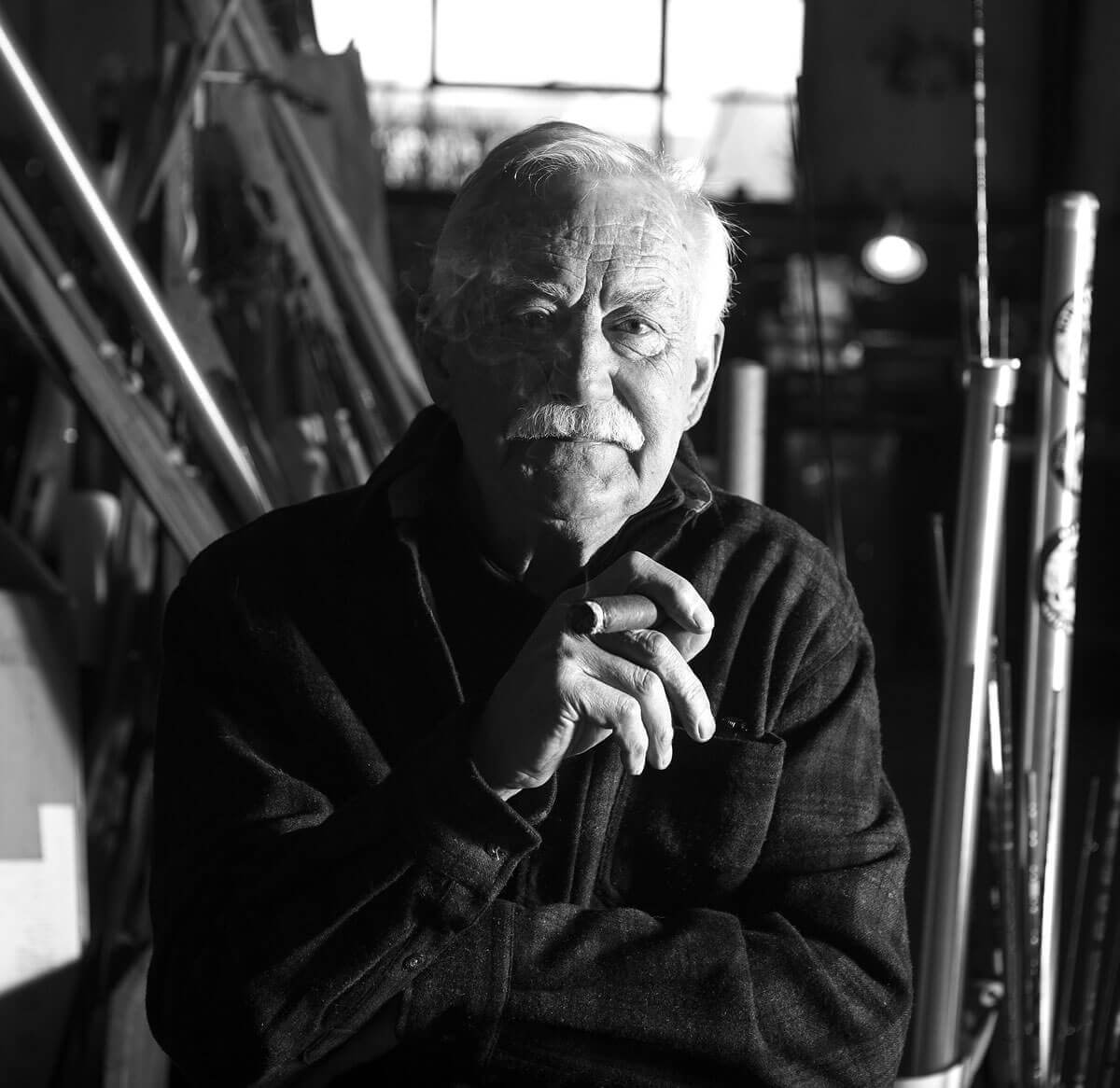 Tom Dorsey sold T&T in the 80s (Maxwell left in the 70s.), whereby the company underwent a cycle of ups and downs. Rod sales were boosted by increases in the average American’s leisure time in the 90s, as well as the release of the industry-altering A River Runs Through It (1992). In 2001, the company moved across the Connecticut River to Greenfield, MA and floundered during the financial crash of 2007, where it remained in a delicate state for some years.
Tom Dorsey sold T&T in the 80s (Maxwell left in the 70s.), whereby the company underwent a cycle of ups and downs. Rod sales were boosted by increases in the average American’s leisure time in the 90s, as well as the release of the industry-altering A River Runs Through It (1992). In 2001, the company moved across the Connecticut River to Greenfield, MA and floundered during the financial crash of 2007, where it remained in a delicate state for some years.
In 2013, South African businessman and angler Neville Orsmond visited the T&T plant out of sheer curiosity to see where his favorite rods were made. There, he realized the need and opportunity to rescue the storied brand. In 2014, the chance to take the helm at T&T set the stage for the realization of a lifelong dream – to work alongside Tom Dorsey, creating the world’s finest fly rods. Orsmond’s aim was to infuse the company with new enthusiasm and ambition around the company’s goals and marketing. Those combined factors have come together to grow the brand and the sales volume reflects those efforts. Maintaining a strong commitment to an American-made product was also of utmost importance.
“It’s been a collaborative process to rebuild the brand,” said Orsmond. “We’ve kept true to who we are by employing people who have been with T&T for 20 to 30 years. That adds up to more than 100 years of experience building rods. People believe in identity and passion. It’s our job to continue to evolve and improve, to build up and care for our anglers and fishery resources through conservation. Fly fisherman believe not only in products but in preserving the outdoors, which makes us lucky to work in this Industry.”
Over the years, T&T has developed a reputation as the Rolls-Royce of fly rods. In 1981 President Reagan commissioned salmon rods as a wedding gift for Lady Diana and Prince Charles. Celebrity anglers around the globe have been spotted with T&T rods in hand, among them, Eric Clapton, Dale Earnhardt, Joe Montana, James Seals (of Seals and Croft) and others. As the company evolves, it’s appealing to an entirely new kind of destination angler.
A new generation of fly anglers is pushing T&T rod design to the next frontier. Some of the premier professional anglers on the planet are T&T advisors and ambassadors, including Keith Rose-Innes, Christiaan Pretorius, Camille Egdorf, Richard Strolis and many others. These pros are testing techniques and equipment in entirely new settings and conditions on new species. Using decades of angling knowledge and experience in waters all over the world, these field experts consult T&T rod builders on every design.
“Thomas & Thomas is not just a brand, it’s a culture,” said T&T advisor Keith Rose-Innes. “Their passionate team takes the time to care for the sport in equal proportion to their drive to lead performance through innovation. I purchased my first T&T Horizon series in 1998 and have enjoyed 20 years of a culture that has made me proud to be part of the T&T team.”
Along with angler expertise, T&T’s in-house craftsmen rely on top training. Old master knowledge paired with a new, trained generation of master rod makers is the foundation of the T&T product line. Graphite rod designer Joe Godspeed learned the trade from Dorsey. And T&T bamboo rod maker Troy Jacques learned from Dorsey and Tom Moran.
“We design by feel and not by math and metrics. There’s always been a lot of stock placed in the physical feel of our designs. That’s what I took away from Tom Dorsey,” said Godspeed. “We’re increasingly shifting toward specialty products. Going toward the future, that’s setting us apart and contributing to our growth. That’s going to be a trend with the company—creating things that are on the cutting edge of what people are using for specialty tactics in the fly fishing world.”
T&T’s focus on construction, design, durability and refinement have won the company new product awards for its graphite rods at the International Fly Tackle Dealer show on two occasions. In 1996 the T&T Horizon series won Best Fly Rod – Saltwater and in 2018, the new T&T Zone 9ʹ 9wt, 4pc took the same category. The company’s outstanding rods rest on the knowledge bank of Tom Dorsey and all the master rod makers who have come through the company’s doors, combined with the latest materials and the innovative T&T design process.
Bamboo remains a strong component of the T&T product line. T&T master bamboo rod maker Troy Jacques has been with the company since 1991 and stuck through the good years as well as the challenging. He initially came on as a graphite rod builder, but when famed rod maker Bob Taylor left T&T, Troy became an apprentice. He was trained by Dorsey and by Tom Moran of Hardy’s fame, who in 1993, came from the UK and remained for some years to observe Dorsey’s techniques.
Troy keeps reminders of his mentors in the bamboo shop: “To this day, I still use a lot of Tom Moran’s techniques. I still have and use Tom Moran’s and Tom Dorsey’s tools. Gluing back then took three people. Tom Dorsey ran the binder, I dipped the parts in glue, Tom Moran rolled the parts to set all 4 the strips and lock them in. To this day, I have Tom Moran’s glue shoes [Glue drips off the table and makes quite a mess.]. I have Tom Dorsey’s too. Their shoes stand by the rod rack.”
In recent years, Troy’s taken his designs to the next evolutionary stage with the T&T Sextant saltwater bamboo rods, looking to the practices of Dorsey and Moran, but listening to the demands of anglers. “Today we have this whole cadre of young guys who are into saltwater. Bamboo has been left out of the warm and saltwater species for the last few decades. But back in the day, these species were only caught with bamboo. I always wanted to make a saltwater rod but didn’t have time. Its’ hard to find time to experiment because everything moves at a snail’s pace with bamboo. When Neville bought T&T and I spoke to him about it, he, Keith Rose-Innes, the anglers from Alphonse Island (Seychelles) and Nick Bowles (of Dubai) gave me a lot of input. I said, ‘I’m not just going to do this for a few guys.’ But with their following, it made it viable,” said Jacques.
Jacques set out to build a rod on which he could fish a 200-grain sink tip for streamer fishing. He then progressed to a prototype 9-wt, 8’ 3”, two-piece rod. Jacques experimented fishing for stripers off Nantucket using a textured fly line. The rod performed so well that his party took turns fishing the rod the entire day. From there, he developed the tarpon rod, an 8’ 5” 12-wt., two-piece designed to push through wind, hold a long line in the air and fight tarpon and other species. Keith Rose-Innes used this model to fish for tarpon in Apalachicola, a rod which was unveiled at IFTD in 2016 to great acclaim. There is now a full series available from 6-12 weight and Jacques is now developing a blue-water 13-14-wt. bamboo rod.
“I’ve had rave reviews from anglers trying these rods. We have a new audience today, new anglers. We have to listen to them and help them get to the next frontier of where they want to go. All the jungle angling and all the focus on landing big saltwater species like GTs, the size of the flies, everything is so new for fly fishing. That’s the way it should be,” said Jacques. “You should listen and support anglers to help them go where they want to go. I’ve taken Dorsey’s tapers and done small things to it to support someone coming from graphite over bamboo so they can give this a try.”
To celebrate T&T’s 50th, a commemorative bamboo rod will be on show at the 2019 IFTD show in Denver and available for consumer purchase shortly thereafter. In the meantime, T&T brand users can celebrate with 50th anniversary t-shirts, hats and other merchandise.
“To me, the company’s history is a reminder that relentless innovation and uncompromising performance in pursuit of perfection is always a worthwhile goal,” said Orsmond. “We can’t wait to celebrate the next 50 years.

